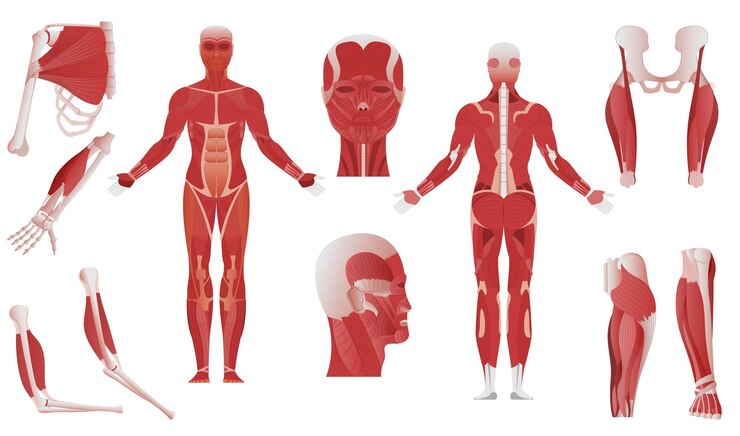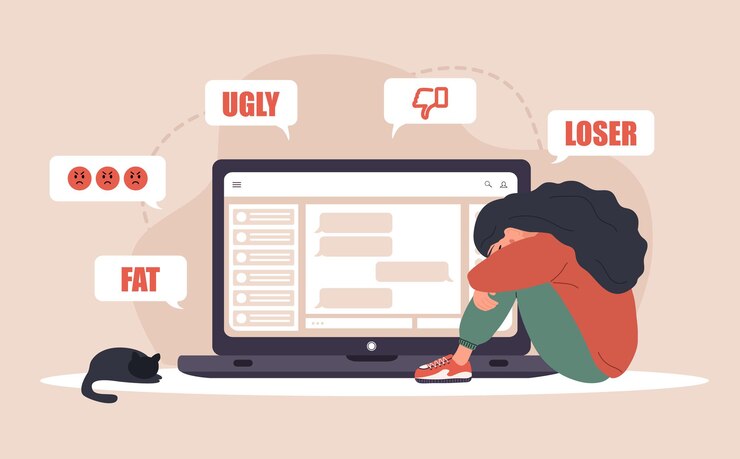Understanding Your Body’s Core: Insights into Torso Anatomy
Welcome to our blog post on understanding your body’s core! Today, we will delve into the fascinating world of torso anatomy and explore the intricacies of this vital region. Whether you’re an athlete looking to improve performance, a fitness enthusiast aiming for a stronger physique, or simply curious about how your body works, this article is for you.
The torso is often referred to as the “core” because it acts as a central hub connecting various parts of our body. It houses essential organs and plays a crucial role in providing stability and support. By gaining insights into its anatomy, we can develop a better understanding of how our bodies function as a whole.
So let’s embark on this journey together as we unravel the mysteries behind torso anatomy and discover just how remarkable our bodies truly are!
The Contents of the Torso
The torso is the central part of our body, housing and protecting vital organs and providing stability for movement. It encompasses various structures that work together to support our overall well-being.
One of the key components within the torso is the thorax, also known as the chest region. The thoracic cavity houses important organs such as the heart and lungs, which are crucial for respiration and blood circulation. Located above this area is another essential structure called the neck, which connects our head to the rest of our body.
Moving downwards in the torso, we reach a region known as the abdomen. This section contains major organs like the stomach, liver, kidneys, and intestines. These organs play significant roles in digestion, metabolism, detoxification, and waste elimination.
Below the abdomen lies another critical part called the pelvis or pelvic region. This area houses reproductive organs like ovaries or testes in females and males respectively. Additionally, it provides support for weight-bearing activities such as walking or sitting.
Lastly but equally important is your back! The back includes muscles that provide stability to your spine while allowing flexibility for movements like bending or twisting.
Understanding these different contents within your torso can help you appreciate how interconnected they are – each working harmoniously to maintain optimal function throughout your entire body! So next time you think of your core strength or consider engaging those abdominal muscles during a workout session – remember all that’s going on inside your amazing torso!
Understanding the Anatomy of the Torso
The human body is a complex and fascinating system, and one of its most important regions is the torso. The torso, also known as the trunk, encompasses everything from your neck to your pelvis. It houses many vital organs and provides support for movement.
At first glance, it may seem like a simple structure, but upon closer examination, you’ll discover that there are numerous layers and structures within the torso. Let’s delve into some key aspects of its anatomy.
Starting with the surface layer, we have the skin. This protective covering not only shields our internal organs but also plays a role in regulating temperature through sweat production.
Beneath the skin lies a layer called subcutaneous tissue or fat tissue. This layer serves as insulation for our bodies and helps to store energy.
Moving deeper into the torso, we encounter muscles such as the rectus abdominis (commonly known as abs), obliques (found on either side), and erector spinae (located along the spine). These muscles provide stability to our core region while aiding in posture maintenance and movement control.
Within this muscular framework lie various cavities housing major organs like heart, lungs, liver, stomach, intestines etc., which play crucial roles in digestion circulation respiration metabolism detoxification reproduction etc.,
To ensure proper functioning of all these structures within your torso requires an intricate network of nerves which arise from spinal cord running throughout your body communicating messages between brain tissues/organs/muscles via electrical signals responsible for maintaining homeostasis.
Understanding these different components that make up your torso can help you appreciate how interconnected they are. By taking care of your overall health – maintaining good posture practicing regular exercise eating well balanced meals staying hydrated getting enough rest – you can optimize functionality minimize risk injury maintain long term wellness!
So next time when someone mentions “torso anatomy,” impress them with your knowledge about this incredible part of the human body!
Major Organs within the Torso
The torso, also known as the trunk of the body, houses a complex network of organs that are vital for our overall health and well-being. These organs work together to perform various functions necessary for our survival.
One of the major organs located in the torso is the heart. This powerful muscle pumps oxygenated blood throughout our body, ensuring that all other organs receive the nutrients they require to function properly. The heart plays a crucial role in maintaining cardiovascular health and is essential for sustaining life.
Another important organ found in the torso is the lungs. These spongy structures help us breathe by taking in oxygen and releasing carbon dioxide from our bodies. They also aid in regulating pH levels and filtering out impurities from the air we inhale.
Moving down to the digestive system, we find two key organs: the stomach and intestines. The stomach acts as a reservoir where food is broken down into smaller particles through chemical processes involving digestive enzymes and acids. From there, it passes into the small intestine where nutrients are absorbed into our bloodstream, providing energy for bodily functions.
Within this intricate system lies another significant organ –the liver– which plays a critical role in detoxification by removing harmful substances from our bloodstreams. It also produces bile to aid digestion and stores essential vitamins such as A, D, E, K.
Lastly but not leastly (I know it’s not really a word!), let’s talk about one more vital organ –the kidneys– responsible for filtering waste products from our blood while maintaining fluid balance within our bodies. They play an integral part in regulating electrolyte levels and controlling blood pressure.
As you can see, these major organs within your torso each have their own unique functions but rely on one another to keep your body running smoothly! Understanding how they work together can help you take better care of yourself both physically and mentally! So next time you think about your core muscles, remember the incredible organs that lie beneath!
Major Muscle Groups in the Torso
The torso is home to several major muscle groups that play a crucial role in our overall strength and stability. Understanding these muscles and how they function can help us improve our posture, prevent injuries, and enhance athletic performance. Let’s take a closer look.
1. The Rectus Abdominis: This is the most well-known muscle of the torso, commonly referred to as the “six-pack.” It runs vertically down the front of your abdomen and helps flex your spine forward.
2. The Obliques: These muscles are located on either side of your waistline and assist with trunk rotation and lateral bending. They not only give you those coveted “side abs” but also contribute to core stability during movements like twisting or turning.
3. The Transverse Abdominis: Deep within your abdominal wall lies this important muscle group. Its primary function is to provide core stability by compressing the abdomen, acting like a natural corset around your internal organs.
4. The Erector Spinae: Running along both sides of your spine, these muscles help maintain proper posture and control spinal movement. They support you when you bend backward or extend your back.
5.The Latissimus Dorsi: Known as the “lats,” these large muscles span across much of the back area from underarms down towards lower back region.
They play an essential role in pulling motions such as rowing or pull-ups while assisting in shoulder adduction (bringing arms towards midline).
By understanding these major muscle groups within our torso, we can focus on targeted exercises that strengthen them effectively for improved overall performance in daily activities or sports-specific movements!
Nerve Supply to the Torso
The nervous system plays a crucial role in keeping our bodies functioning properly, and the torso is no exception. It is responsible for transmitting important signals between different parts of the body, allowing us to move, feel sensations, and control vital functions. Understanding the nerve supply to the torso can provide valuable insights into how our bodies work.
The nerves that innervate the torso originate from the spinal cord, which acts as a central hub for relaying messages throughout the body. These nerves branch out like intricate pathways, sending signals to various organs and muscles within the torso region.
One of the main groups of nerves supplying sensation to the torso is known as dermatomes. Dermatomes are specific regions on our skin that correspond to individual spinal nerve roots. By understanding these patterns, healthcare professionals can accurately diagnose conditions affecting different areas of your trunk.
In addition to sensory nerves, there are also motor nerves that control muscle movement in your core area. These motor fibers allow you to perform activities such as bending forward or twisting sideways by contracting specific muscles in coordination with other limbs.
It’s fascinating how interconnected our bodies truly are! The network of nerves within your torso ensures seamless communication between different structures so they can work together harmoniously.
By having knowledge about this intricate web of nerve supply in their torsos, individuals can gain a deeper appreciation for their own anatomy and better understand any potential issues or symptoms they may experience down-the-line
Conclusion
Understanding the intricate anatomy of the torso is crucial in comprehending the complexities and interconnectedness of our bodies. The torso serves as a powerhouse, housing vital organs and muscle groups that enable us to function optimally.
From major organs like the heart, lungs, liver, and stomach to essential muscle groups such as the abdominals, back muscles, and diaphragm – each component plays a significant role in maintaining our health and well-being.
The nerve supply to the torso allows for seamless communication between these structures, ensuring proper functioning throughout our daily lives.
By gaining insights into torso anatomy, we can appreciate how integral it is to overall physical strength, stability, flexibility, and posture. It serves as a foundation for movement in various activities such as sports or simply performing everyday tasks with ease.
So next time you exercise or engage in any physical activity, remember to pay attention not just to your arms or legs but also to your core. Strengthening this central region will not only enhance your performance but also help prevent injuries by providing stability and support.







